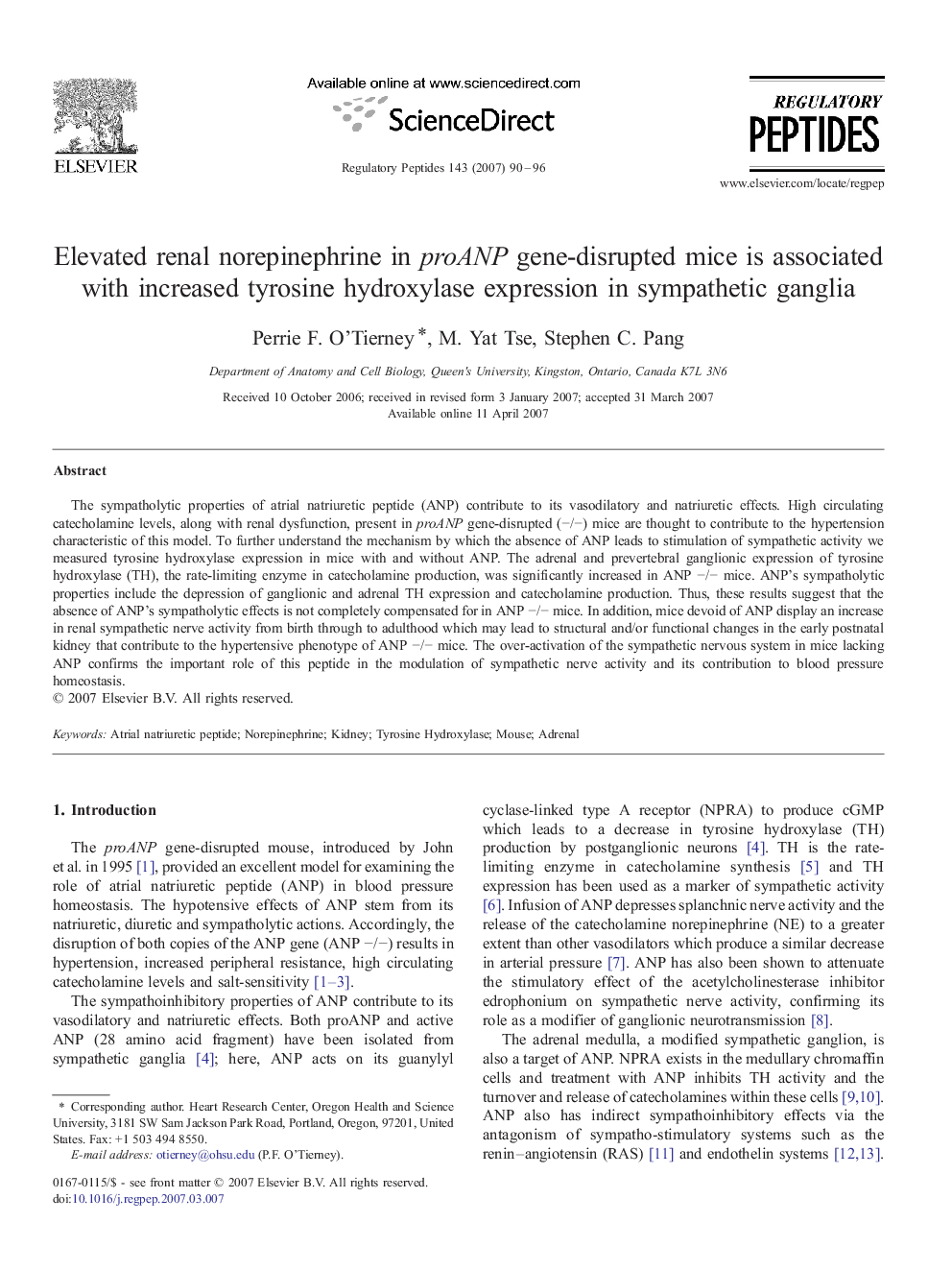| Article ID | Journal | Published Year | Pages | File Type |
|---|---|---|---|---|
| 2023204 | Regulatory Peptides | 2007 | 7 Pages |
The sympatholytic properties of atrial natriuretic peptide (ANP) contribute to its vasodilatory and natriuretic effects. High circulating catecholamine levels, along with renal dysfunction, present in proANP gene-disrupted (−/−) mice are thought to contribute to the hypertension characteristic of this model. To further understand the mechanism by which the absence of ANP leads to stimulation of sympathetic activity we measured tyrosine hydroxylase expression in mice with and without ANP. The adrenal and prevertebral ganglionic expression of tyrosine hydroxylase (TH), the rate-limiting enzyme in catecholamine production, was significantly increased in ANP −/− mice. ANP's sympatholytic properties include the depression of ganglionic and adrenal TH expression and catecholamine production. Thus, these results suggest that the absence of ANP's sympatholytic effects is not completely compensated for in ANP −/− mice. In addition, mice devoid of ANP display an increase in renal sympathetic nerve activity from birth through to adulthood which may lead to structural and/or functional changes in the early postnatal kidney that contribute to the hypertensive phenotype of ANP −/− mice. The over-activation of the sympathetic nervous system in mice lacking ANP confirms the important role of this peptide in the modulation of sympathetic nerve activity and its contribution to blood pressure homeostasis.
